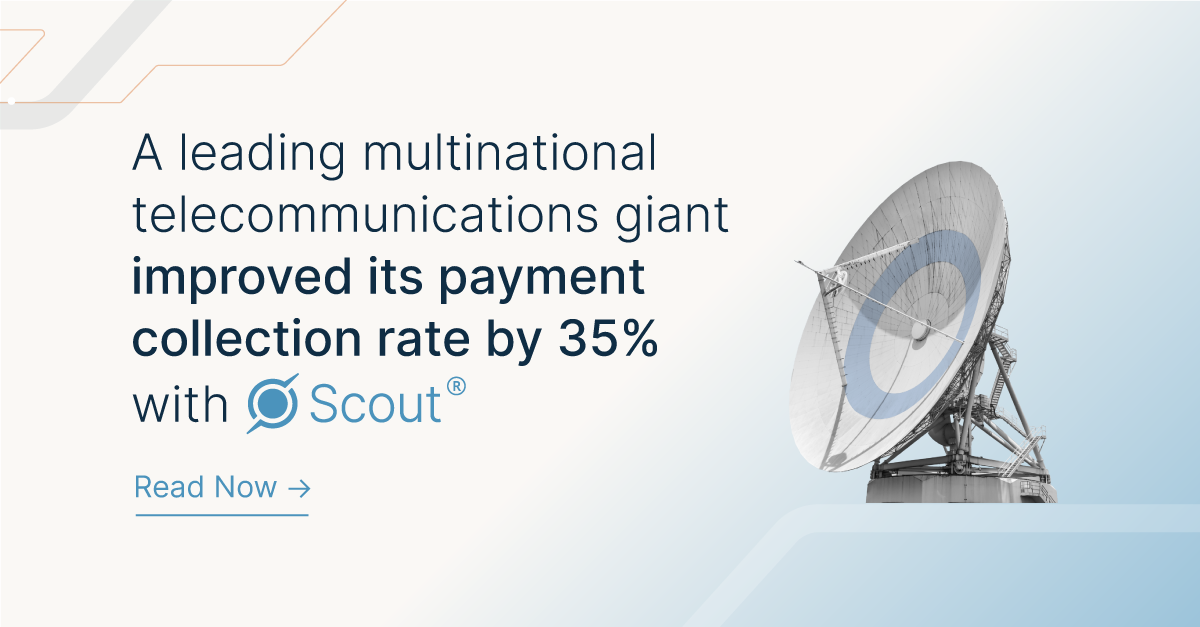Telecom BT Group identifies a 20% improvement in operational efficiency by leveraging the Scout AI model Published by Everest Group for Soroco: Read here Enterprise overview BT Group is the UK’s leading provider of fixed and mobile telecommunications and related secure digital products, solutions, and services. BT also provides managed telecommunications, security network, and IT infrastructure services to customers across 180 countries. It serves a wide range of customers such as small and medium-sized enterprises, start-ups, wholesale customers, commercial premises, public sector organizations, and large corporate firms. The provider has expanded its presence globally across Europe, Asia Pacific, the Middle East, Africa, and America. The company partnered with Soroco to deploy Scout, its task mining / DII offering in 2021 to discover and analyze processes. Industry Telecommunications Countries 180 Location Europe, Asia Pacific, the Middle East, Africa, and America Drivers of adoption Process transparency Gaining visibility into the as-is processes that are executed across different operational teams Generate process insights Improving the accuracy of data for the operational teams to work on to generate reliable insights about business processes Improve employee productivity Helping employees realize the potential for improvement in executing their tasks Process improvement Leveraging a fact-based approach to discover and analyze processes for improving the overall process efficiency Approach to DII initiatives Project initiation DII was introduced in January 2021 to analyze user interactions across different applications and gain visibility into processes Process selection Process excellence team conducted PoCs across different business units to identify processes for deployment. DII was first implemented in BT Group’s GBS (Group Business Services) unit, for use cases such as order management and pricing excellence Talent This is built through internal training programs and it does not rely on any third-party service providers for talent. It introduced certification courses to train its employees Organization structure BT Group has implemented a hub and spoke CoE model wherein the central hub manages license management and best practice sharing, and the spokes within business units leverage the insights for process improvement initiatives Strategic Payoff Identified the potential to realize a 15-20% improvement in operational efficiency by leveraging digital interaction intelligence solutions Reduced the time to obtain the operational data that was otherwise challenging to obtain by manual methods Improved upstream and downstream processes by identifying and eliminating redundant processes Status of these initiatives Current status of these initiatives ~60 teams leverage DII across hundreds of projects. BT Group leverages DII for a wide range of use cases such as record to report (R2R), order management, billing assurance, pricing excellence, and helpdesk. Plans for these initiatives Become self-sufficient in leveraging DII and increase value realization efforts based on the identified opportunitiesExpand deployment to other teams and prepare department-specific use cases with clearly defined targetsContinue to leverage DII to identify more process standardization and automation opportunities Challenges Addressing concerns from operational teams regarding the adoption of task mining / DII technology due to the apprehensions around increased visibility and transparency into the ways of working Lack of understanding about the applications and benefits that DII technology could offer Getting approvals from the IT team related to data usage in the initial phase of the journey Winning insights Establish a CoE model within the organization to manage these initiatives or utilize existing CoEs to collaborate and manage these initiatives Create a business case to analyze the expense and resources consumed and the return and benefits that can be achieved for further adoption in other areas to overcome the barriers to adoption Have an effective change management program to have proactive and continuous communication with relevant stakeholders to educate them about the benefits of technology and address their concerns or apprehensions related to data privacy To get more insights about Digital Interaction Intelligence and download the complete DII playbook by Everest Group Download the Everest Group Playbook
Category: telecom
How Tech Mahindra used ScoutAI to Streamline Operations fora UK Telecom Giant, ReducingProcessing Effort by 34%
Telecom How Tech Mahindra used Scout to streamline operations for a UK telecom giant, reducing processing effort by 34% The Challenge One of Tech Mahindra’s leading telecom customers in the UK, having a global presence, was grappling with inefficient and variable order fulfilment, ITSM, Sales Ops, and billing processes. This inefficiency led to increased time expenditure, revenue leakage, reduced process accuracy by over 50%, a suboptimal end-user experience, and eventually high cost of operations with severe operational issues impacting the morale of several employees. The company had already used a myriad of discovery tools to identify end-to-end opportunities for reducing the cost of operations but had not yet achieved the desired level of optimization. Location UK Industry Telecom 12 Subsidiaries 85,000+ Employees Attempted Solution before Scout Consultants requested an additional 1,200 hours for Manual Discovery Workshops The company engaged multiple discovery tools to overcome the operational shortcomings. They went about this in a traditional manner, but these tools operated in silos, leading to fragmented insights that failed to provide a holistic view of process inefficiencies. This traditional approach lacked the integration and sophisticated analytics needed to pinpoint critical bottlenecks and did not account for the nuanced variations in workflows across different teams and locations. Enter The business heads of the company then worked with Tech Mahindra’s BPS Team for evaluating and onboarding Soroco to find and fix these problems. Soroco’s Scout was brought into play, offering a suite of automation and standardization recommendations tailored to tackle the specific challenges faced. Scout AI model could be quickly put into action because it didn’t need complicated integration with current systems. The AI analysed how their customer teams interact with various applications, mapping out how and why work happens the way it does within the said processes. This led Scout to discover a key insight: there was excessive manual intervention in order pre-validation, generation, and validation processes. Within 6 weeks the Scout AI model uncovered a critical insight – the problem lay with high manual processing effort. Scout to “find and fix” Step 1: Find As the first step, AI decoded the work patterns of the different teams and connected them to business activities, simply by analysing interactions between the team and their software. It then automatically classified these work patterns as either core business activities or non-core activities. Based on this analysis, within two weeks, the Scout AI model provided the following insights: 40% time was spent on core business apps and activities. Contrary to popular belief, only 40% of the team’s effort was spent on core business apps and activities. This startling statistic pointed to a massive work recall gap across the team, highlighting the disparity between the team’s understanding of how work was being done and how work should actually be done. 60% time was spent on non-core activities such as pre-validation, managing workflow, manual order creation, duplicate billing note generation, one-off adjustments, sales ops validation activities, and more Harvard Business Review Do You Know How Your Teams Get Work Done? Read article The AI further helped Tech Mahindra in determining the following: Key Observation Impact Managing spreadsheets and custom reporting The team was manually managing data across 100+ spreadsheets and creating custom reports for management leading to ~10,000 hours of manual work Application switch A common trend was identified between different teams as they spent so much time on non-core activities – information silos and disconnected systems, forcing the team to incessantly toggle between different applications ultimately resulting in manual inefficiency and loss of productivity to the tune of 18500 hours annually Manual verification and authentication Scout identified that the team was spending close to ~20,000 hrs annually i.e. 16% of process effort just for verifying & authenticating the right customers Composing similar emails The Scout AI model was able to identify similar topics across several email chains and found a high number of email topics which if automated could help to save ~8,000 hours annually Step 2: Fix Based on the above insights, Scout AI model recommended the following fixes: Quick Fixes Identified 100+ user training opportunities Produced As-Is & To-Be process snapshots for different processes Produced 70+ L5 process-designed documents/training documents to drive standardization in training Created conformance view – gold standard (what’s known to the business) vs what standard users follow (unknown to the business) Introduce an excel-based template to take notes which can be used across teams and reduce time to analyze issues if it is not resolved in first time Deep Fixes Build RPA bots across Customer order, validation, and ITSM processes Build RPA bots across Customer order, validation, and ITSM processes By introducing RPA-based query resolution across different processes, the company was able to increase the self-serviceability of online portals and reduce manual effort. This led to expedited process efficiency of the team’s bandwidth, allowing them to focus on core business activities. Standardise workflows Standardise workflows Leadership also made a concerted effort to standardise excel-based templates and introduce chatbot-based self-serviceable channels to handle simple queries from customers and later scale up in other areas. IVR based customer validation was introduced to free up users’ bandwidth and improve case handling & call wait time. Self-serviceable channels was also introduced to drive correct routing of workflows within teams, saving them collaborative ~50,000+ hours. Standardise data inputs Standardise data inputs The leadership enforced standardisation of data inputs, which reduced the effort and time spent on organising and validating the input data received by different teams. Centralized Governance Centralized Governance The company focused on centralised governance to track proactive process variation anomalies & followed up with customers by dedicated teams to reduce overall wait time. The root cause of all issues was that there were significant digital gaps in the overall process, and these were predominantly because systems did not talk to each other, and because data was duplicated/fragmented Scout also provided detailed insights into the cost of unintegrated ERP systems and, discovered revenue leakages in the organisation. Based on these insights, the leadership kicked off… Continue reading How Tech Mahindra used ScoutAI to Streamline Operations fora UK Telecom Giant, ReducingProcessing Effort by 34%
Telecom company use case solved by scout
Telecom A leading multinational telecommunications giant improved its payment collection rate by 35% with Scout. Email it to me The Challenge A leading telecommunications giant was grappling with operational inefficiencies in its Collections division. The team faced a daunting task: managing 260k cases of unsettled credit bills annually, leading to significant impacts on revenue recognition, cash flow, and key financial metrics. The collections team had to constantly follow up with customers for payment and were often met with undesirable cases such as contact but no payment confirmation; voicemail, no response; redirected to 3rd parties. They also had to deal with cases in which customers disputed the charges or requested payment extensions. The team was spending a chunk of their time researching and settling such cases. As a result, Mid-Management was unhappy as key business metrics such as Past Dues & Average Days Delinquent were impacted, which in turn were affecting key financial metrics. Leadership was unhappy as Revenue Recognition; Cash flow and Revenue Forecasting were impacted since less than 25% of overdue payments were getting completed. Collections teams were dissatisfied as they could not meet their key performance targets such as Collections Settlement Rate, Positive Outcome Rate & Payment Realization Rate since their best attempts at collection were hampered by upstream issues and negative customer responses. Industry Telecom Location Europe Attempted Solution before Scout The consultants followed the traditional approach of interviewing subject matter experts which was a manual effort: time intensive and subjective The company engaged a top finance transformation consulting firm to optimize the Accounts Receivable process. The consultants followed the traditional approach of interviewing subject matter experts (SMEs) from the Collections team, which was a manual effort, time intensive and subjective in nature. Moreover, SMEs were already overstretched and had no time to answer detailed questions and provide extensive data which was needed by the consultants. As a result, the leadership could not achieve their desired business outcomes and the problems persisted for leadership, management and collections team. This manual approach didn’t add any real value and intensified the problem. Enter The CFO and Head of Digital Transformation turned to Scout to find and fix problems in their Account Receivable operations. Deployed within hours and without needing complex integration, Scout focused on team-based insights while ensuring user anonymity and transparency. Scout’s AI model could be quickly put into action because it didn’t need complicated integration with current systems. The AI analyzed how collections teams interact financial accounting systems and other applications, mapping out how and why work happens the way it does within the collections function. Scout’s AI model decoded the work patterns of the collections team and connected them to business activities Scout to “find and fix” Step 1: Find As the first step, the AI decoded the work patterns of the collections team and connected them to business activities, simply by analyzing interactions between the team and their software. It then automatically classified these work patterns as either core account receivable activities or non-core activities. Based on this analysis, within two weeks, Scout’s AI model provided the following insights: 60% time was spent on the core financial system Scout’s analysis revealed that only 60% of the Collections team’s time was spent on the core financial system. A significant portion of their time was dedicated to low-priority cases like ‘no payment confirmation’, ‘voicemail’, ‘no response’, ‘redirected to 3rd parties’ and cases with upstream issues (ex. erroneous case creation, payments made but not reflecting in system). Due to the lack of case categorization to identify and de-prioritize such cases, ~50% of cases they worked on, remained unsettled. Harvard Business Review Do You Know How Your Teams Get Work Done? Read more 40% time was spent on manual communications The AI also determined that the remaining 40% of the time was wasted on manual and repetitive tasks, document handling, and toggling between applications. This startling statistic pointed to a massive work recall gap across the team, highlighting the disparity between the team’s understanding of how work is being done and how work was actually being done Harvard Business Review How Much Time Does Having Too Many Apps Really Waste? Read article Harvard Business Review Do You Know How Your Teams Get Work Done? Read more Step 2: Fix Based on these insights, the management team devised a strategic action plan: Quick Fixes These were ‘no-code’ fixes based on standardization and user training Email Templatization Email Templatization Standardizing the content and format of frequent communication to streamline customer interactions. Document Consolidation Document Consolidation Centralizing collections-related documents to reduce time spent on file searching and toggling. Note Generator Application Note Generator Application Explore tools to save time on manual note-taking and documentation. Deep Fixes Systemic and long-term fixes planned across the organization Scout also provided detailed insights into the cost of unintegrated payroll systems and, also the disconnection debt in the organization, leading to deep fixes across the function. Common Case Management System Common Case Management System Implementing a system to log, categorize, and prioritize customer collections cases effectively. RPA for Manual Validations RPA for Manual Validations Several customer validations, verifications and research in the dispute and payment extension processes could be automated to perform the manual activities with rule-based automation. New Notification Channels New Notification Channels Introducing a mobile app and text notifications to nudge customers towards timely payments and self-service options. All notifications to remind customers of overdue payments could be sent through the Business App, providing them with the option to request a callback. Automated calls could be used as reminders, specifically targeting groups that tend to pay over the phone (e.g.DD/Payment Details provided) Note Generator Application First Contact via Business App Encouraging customers to schedule callbacks, reducing the time spent on unsuccessful contact attempts. This also acts as a nudge for the customer towards self-serve (via Business App) by providing incentives associated with reduction in late payment fees Harvard Business Review What’s Lost When Data Systems Don’t Communicate Read more It is important to note… Continue reading Telecom company use case solved by scout


